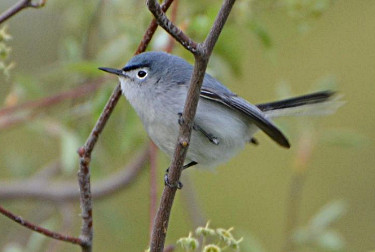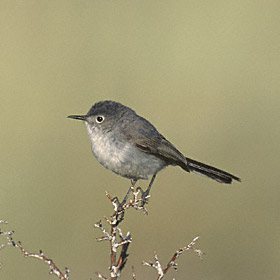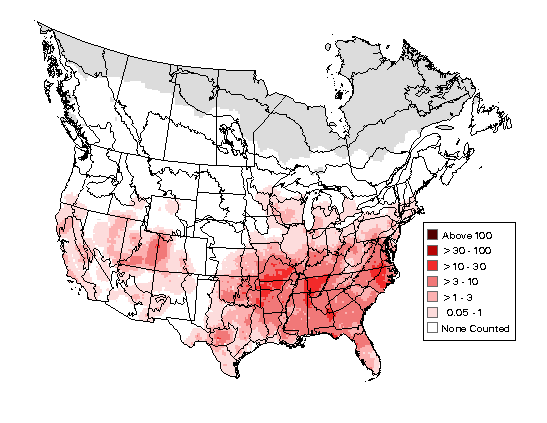Blue-gray Gnatcatcher

Blue-gray Gnatcatcher Information
Length: 4.25 - 4.75"
Habitat: Nests in deciduous woods, pine forests with oak understory (in southeast US), wooded swamps, streamside thickets, and brushy areas.
Diet: A variety of small insects, such as leaf beetles, treehoppers, moths, and flies. Also, insect larvae and spiders.
Additional Information
Blue-gray GnatcatcherHabitat, diet, feeding behavior, nesting, migration, and conservation status of this bird. Includes range map, photos, and songs and calls. (From Audubon Field Guide)
Female Blue-gray Gnatcatcher

Blue-gray Gnatcatcher
Identification Tips
- Very small, active bird
- Thin bill
- White eye ring
- Blue-gray upperparts
- White underparts
- Long, black tail with white outer tail feathers-mostly white when viewed from below
- Male has black supercilium in breeding season
(Credit: U. S. Geological Survey)
Breeding Bird Survey Map,
2011-2015

(Image credit: USGS)
Range in New England
The Blue-gray Gnatcatcher is found breeding in Connecticut, Rhode Island, Massachusetts, all but the northernmost portions of Vermont and New Hampshire, and far southern Maine. This bird is found in greater numbers in the southern New England states.
Year-round Map from eBird
Sightings of the Blue-gray Gnatcatcher throughout the year over past 10 years
(2009-2019)![]()
Christmas Bird Count Map
Historical CBC Map from USGS